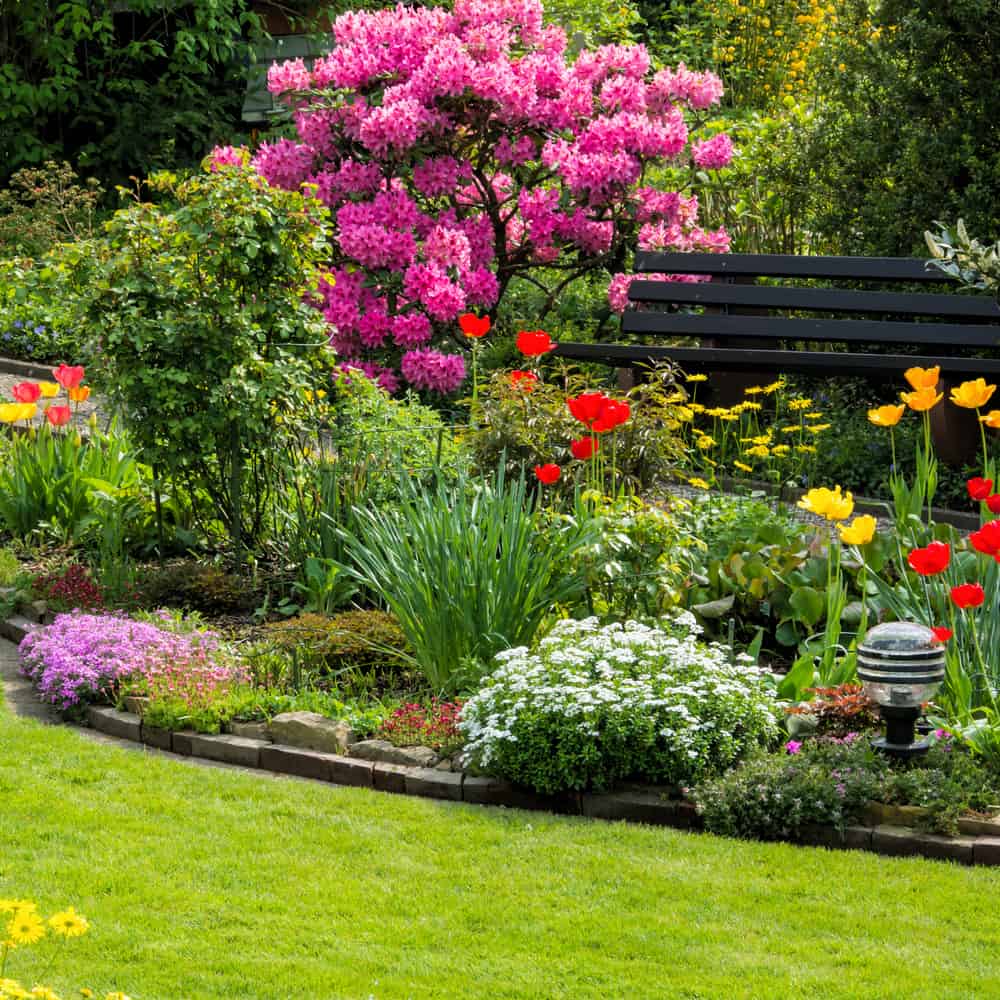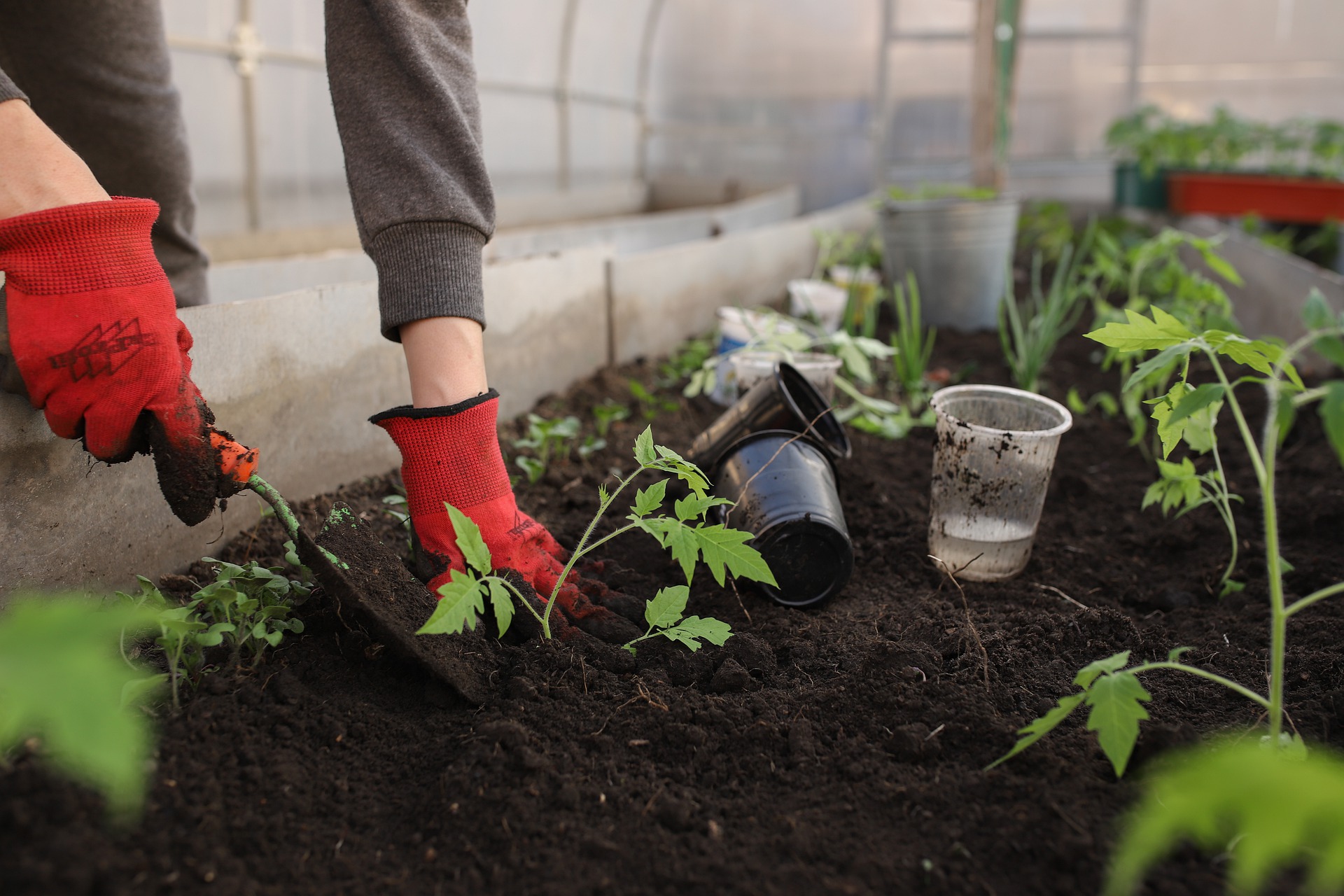The Joy of Gardening: How to Cultivate a Beautiful Home Oasis
Gardening at home is a rewarding and therapeutic hobby that allows you to create a stunning living space. Transform your outdoor area into a thriving oasis by following expert advice and tips for gardening at home. This guide is designed for gardeners of all skill levels, offering practical insights and strategies for success.
The art of gardening combines creativity, patience, and dedication, resulting in a beautiful and serene environment. By understanding the unique aspects of your space and selecting the appropriate plants, you can cultivate a home garden that brings joy and tranquility. This comprehensive article covers essential topics, from assessing your space and selecting plants to preparing the soil, mastering planting techniques, and maintaining your garden.
As you embark on your gardening journey, remember that the key to success lies in understanding the unique characteristics of your space and the plants you wish to cultivate. By following the tips for gardening at home provided in this guide, you’ll be well on your way to creating a stunning and thriving outdoor oasis.
Assessing Your Space: Choosing the Ideal Location for Your Garden
A successful home garden begins with selecting the right location. Evaluating your available space and understanding the unique factors that influence plant growth is crucial for creating a thriving oasis. Consider the following aspects when determining the ideal location for your garden:
Sunlight Exposure
Sunlight is vital for plant growth, as it provides the energy necessary for photosynthesis. Assess the sunlight exposure in various areas of your property throughout the day. Most plants require at least six hours of direct sunlight, so choose a location that meets these needs.
Soil Quality
Soil quality plays a significant role in plant health and growth. Test your soil to determine its pH level, nutrient content, and structure. Based on the results, you may need to amend the soil with organic matter, such as compost or aged manure, to create a nutrient-rich foundation for your plants.
Proximity to Water Sources
Access to a water source is essential for maintaining a healthy garden. Choose a location that is convenient for watering, either by hand or with an irrigation system. Keep in mind that some plants require more frequent watering than others, so plan accordingly.
By carefully assessing your space and considering factors such as sunlight exposure, soil quality, and proximity to water sources, you can select the perfect location for your garden. This strategic approach sets the stage for a thriving and beautiful outdoor oasis, ensuring the success of your gardening efforts.
Selecting Plants: Choosing the Best Flora for Your Home Garden
Selecting the right plants for your home garden is essential for creating a thriving and beautiful outdoor space. By considering factors such as climate, plant size, and maintenance requirements, you can ensure the success of your gardening efforts. Follow these tips for gardening at home to choose the best flora for your home garden:
Climate Considerations
Select plants that are well-suited for your local climate. Research the hardiness zone of your region and choose plants that can thrive in those conditions. Keep in mind that some plants may require additional protection during extreme weather events, such as frost or heatwaves.
Plant Size
Consider the mature size of the plants you select, as overcrowding can lead to reduced growth and poor health. Space plants according to their expected size, allowing adequate room for growth and air circulation.
Maintenance Requirements
Be realistic about the amount of time and effort you can dedicate to maintaining your garden. Opt for low-maintenance plants if you have a busy schedule or limited gardening experience. For more experienced gardeners, consider incorporating a variety of plants with different maintenance requirements to create visual interest and depth.
By carefully selecting plants based on climate, size, and maintenance requirements, you can create a stunning and thriving home garden. Remember to consider the unique aspects of your space and the needs of your chosen plants, ensuring a successful and rewarding gardening experience.
Preparing the Soil: Ensuring a Nutrient-Rich Foundation for Your Plants
Preparing the soil for planting is a crucial step in creating a thriving home garden. By improving soil structure, adding organic matter, and maintaining proper pH levels, you can ensure a nutrient-rich foundation for your plants. Follow these tips for gardening at home to prepare your soil for success:
Improving Soil Structure
Soil structure plays a significant role in water retention, nutrient availability, and root penetration. To improve soil structure, consider incorporating organic matter, such as compost or well-rotted manure, to increase the soil’s ability to retain moisture and nutrients. Additionally, avoid compacting the soil by using a broadfork or garden fork to loosen the soil before planting.
Adding Organic Matter
Organic matter, such as compost, aged manure, or leaf litter, provides essential nutrients and improves soil structure. Incorporate organic matter into the top 6-8 inches of soil, aiming for a 25-50% organic matter content. This enriched soil will promote healthy root growth and provide a strong foundation for your plants.
Maintaining Proper pH Levels
Soil pH affects the availability of essential nutrients for plant growth. Test your soil to determine its pH level, and amend as necessary to maintain a balanced pH between 6.0 and 7.0. Add lime to raise pH levels or elemental sulfur to lower pH levels, following the recommended application rates for your specific soil type and pH level.
By following these tips for gardening at home, you can prepare the soil for planting, ensuring a nutrient-rich foundation for your plants. With proper soil preparation, your garden will thrive, providing a beautiful and bountiful outdoor oasis for you to enjoy.
Planting Techniques: Strategies for Successful Planting and Growing
Mastering planting techniques is essential for creating a thriving home garden. By following expert strategies for proper spacing, watering, and mulching, you can ensure the success of your gardening efforts. Here are some tips for gardening at home to help you plant and grow your garden:
Proper Spacing
Proper spacing is crucial for healthy plant growth, allowing adequate room for roots to expand and providing sufficient air circulation. Research the recommended spacing for each plant variety and adjust accordingly, depending on your garden’s size and layout. Maintaining proper spacing also simplifies maintenance tasks, such as weeding and pruning.
Watering Techniques
Watering is a critical aspect of plant care, as it directly impacts growth and overall health. To ensure optimal watering, consider the following:
- Water deeply and infrequently, promoting strong root growth and reducing evaporation.
- Water early in the day to minimize evaporation and provide moisture for photosynthesis.
- Use drip irrigation or soaker hoses to deliver water directly to plant roots, reducing water waste and preventing foliar diseases.
Mulching Benefits
Mulching offers numerous benefits, including moisture retention, temperature regulation, and weed suppression. Apply a 2-3 inch layer of organic mulch, such as shredded leaves or wood chips, around plants, leaving a small gap between the mulch and plant stems. Regularly replenish the mulch to maintain its effectiveness and aesthetic appeal.
By following these tips for gardening at home, you can master the art of planting and growing, ensuring a thriving and beautiful home garden. With proper spacing, watering, and mulching techniques, your garden will flourish, providing a stunning outdoor oasis for you to enjoy.
Maintaining Your Garden: Tips for Keeping Your Garden Healthy and Beautiful
Regular maintenance is crucial for ensuring a healthy and beautiful home garden. By following these tips for gardening at home, you can simplify upkeep and promote the overall well-being of your plants:
Weeding
Weeds compete with your plants for water, nutrients, and sunlight. Remove weeds regularly, taking care to extract the entire root system to prevent regrowth. Utilize mulching techniques to suppress weed growth and maintain a tidy appearance.
Pruning
Pruning encourages healthy growth, improves plant structure, and enhances flowering and fruiting. Prune dead, damaged, or diseased branches and stems, and maintain the desired shape and size of your plants. Research the specific pruning requirements for each plant variety to ensure optimal results.
Pest Control
Monitor your garden for signs of pests, such as chewed leaves, discolored foliage, or weakened plants. Implement integrated pest management strategies, including the introduction of beneficial insects, the use of organic pesticides, and the removal of affected plant material. Regularly inspect your garden to catch pest issues early and prevent widespread damage.
By incorporating these tips for gardening at home into your maintenance routine, you can keep your garden healthy and beautiful. Regular weeding, pruning, and pest control promote strong growth, improve plant aesthetics, and extend the enjoyment of your gardening efforts.
Harvesting and Preserving: Enjoying the Fruits of Your Labor
Harvesting and preserving your garden’s bounty is a rewarding experience that extends the enjoyment of your gardening efforts throughout the year. By following these tips for gardening at home, you can maximize your harvest and maintain the freshness of your produce:
Timing Your Harvest
Harvesting at the right time is crucial for optimal flavor, texture, and nutritional value. Research the ideal harvesting time for each plant variety, and monitor your garden regularly for signs of ripeness. Be prepared to harvest frequently, as many vegetables and fruits have a short window of peak freshness.
Preserving Techniques
Preserving your harvest allows you to enjoy the fruits of your labor long after the growing season has ended. Utilize the following preservation methods:
- Canning: Seal food in airtight containers, submerged in boiling water, to destroy microorganisms and create a vacuum seal.
- Freezing: Blanch vegetables to halt enzyme activity, then freeze in airtight containers or bags to maintain quality and nutritional value.
- Drying: Dry fruits, vegetables, and herbs by air, sun, or dehydrator to remove moisture and prevent spoilage.
- Pickling: Preserve vegetables in a brine of vinegar, water, and salt, optionally adding sugar, spices, or herbs for flavor.
- Fermenting: Submerge vegetables in a brine to encourage the growth of beneficial bacteria, enhancing flavor and nutritional value.
By employing these tips for gardening at home, you can harvest and preserve your garden’s bounty, extending the enjoyment of your gardening efforts throughout the year. Timely harvesting and proper preservation techniques ensure that your produce remains fresh, flavorful, and nutritious, providing a source of pride and satisfaction for gardeners of all skill levels.
Expanding Your Skills: Exploring Advanced Gardening Techniques
As you gain experience and confidence in your gardening abilities, consider incorporating advanced techniques to further enhance your home garden. These innovative and creative concepts provide value and usefulness to the gardener, elevating your gardening skills to the next level:
Companion Planting
Companion planting involves strategically placing different plant species together to create mutually beneficial relationships. This technique can improve plant growth, increase pest resistance, and enhance overall garden aesthetics. For example, planting marigolds alongside tomatoes can deter nematodes and other pests, while basil planted near peppers can enhance flavor and growth.
Vertical Gardening
Vertical gardening maximizes space by growing plants upwards, rather than outwards. Utilize trellises, wall planters, or hanging baskets to create visually appealing and space-efficient gardens. Vertical gardening is particularly useful for gardeners with limited ground space, such as those living in apartments or urban environments.
Seasonal Extensions
Extend your gardening season by employing techniques such as cold frames, hoop houses, or row covers. These protective structures maintain a warmer temperature, allowing you to grow plants earlier in the spring and later into the fall. Seasonal extensions enable gardeners to enjoy fresh produce for a more extended period, even in colder climates.
By incorporating these advanced gardening techniques, you can elevate your gardening skills and create a more productive, visually appealing, and sustainable home garden. Tips for gardening at home, such as companion planting, vertical gardening, and seasonal extensions, offer innovative solutions for gardeners of all skill levels, enhancing the overall gardening experience and fostering a deeper connection with nature.







